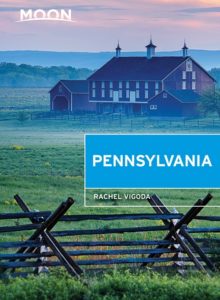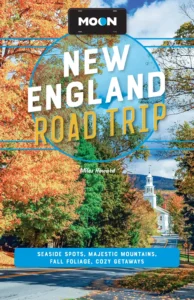Lancaster and Pennsylvania Dutch Country
The only place approaching an urban scale in this part of Pennsylvania, Lancaster (pop. 59,708) is the region’s commercial center, a bustling city that, for a single day during the Revolutionary War, served as capital of the rebellious United States. Though most visitors view it as little more than a handy base for exploring nearby Pennsylvania Dutch Country, Lancaster does have a couple of attractions in its own right, such as the redbrick pseudo-Romanesque Central Market (23 N. Market St.) near King and Queen Streets in the center of town. It hosts the nation’s oldest publicly owned, continuously operating farmers market, currently held all day Tuesday and Friday as well as Saturday mornings and early afternoons.
The Landis Valley Village & Farm Museum (Tues.-Sun. mid-Mar.-Dec., Wed.-Sun. Jan.-mid-Mar., $12 adults), 5 mi (8 km) northeast of Lancaster, is a popular living history park of more than 100 ac (40 ha) preserving and interpreting traditional rural lifeways of eastern Pennsylvania.
Pennsylvania Dutch Country
East of Lancaster, toward Philadelphia, the old Lincoln Highway (US-30) runs through the heart of what has become internationally famous as the Pennsylvania Dutch Country. This is a pretty, almost completely rural region, unremarkable apart from the presence here of various Old Order Anabaptist Christian sects, including Amish and Mennonite groups, who eschew most of the trappings and technological advances of the 21st century, including cars, electricity, and irrigation, and retain their simple ways. Long before the Peter Weir movie Witness gave Amish low-tech lifestyle the Hollywood treatment, visitors have been coming here to see these anachronistic descendants of German immigrants (Deutsche = Dutch) who settled here in the early 1700s, and to whom all outsiders are known simply as “English.”
The best way to get a feel for the Amish and Mennonite ways of life is to follow back roads, by bike if possible, through the gently rolling countryside of Lancaster County, keeping an eye out for their horse-drawn buggies (Amish ones are gray, the Mennonites’ ones are black). You can cross covered bridges and buy produce, breads, cakes, and shoo-fly pie from the many roadside stands marked by hand-lettered signs.
Most of the many Amish-style restaurants in the region are huge and forbiddingly full of bus-tour hordes. A quintessential road-food place is the Route 30 Diner (2575 E. Lincoln Hwy., 717/397-2507, Mon.-Thurs. until 10pm, Fri.-Sat. 24 hours) in Ronks on the north side of US-30, just east of the Hwy-896 intersection.
Though it won’t give you any great insight into the Amish, one unique place to stay is the Red Caboose Motel and Restaurant (888/687-5005 or 717/687-5000, $85 and up), a mile east of Strasburg on Paradise Lane. All the rooms are built inside old railroad cars, and the on-site restaurant simulates a train journey, with whistles blowing and a gentle rocking vibration to ease your digestion. Strasburg is also home to the Village Greens Miniature Golf Course (717/687-6933), which is so fun and challenging that it was featured in Sports Illustrated.
Related Pennsylvania Travel Guides
Pennsylvania Travel Map
















